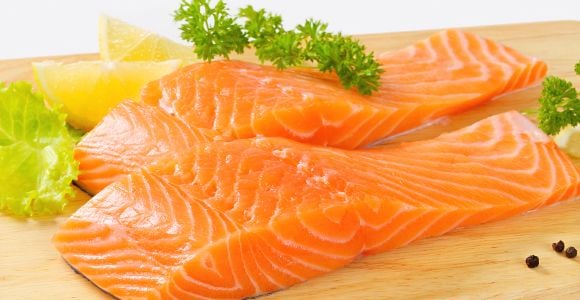In class, I am asked often from students, "How can I get more Vitamin D into my diet?" I have read a lot of reports lately that we are not getting enough Vitamin D in our daily diets.
This indeed is true; many recent research studies are suggesting "we" are not getting the recommended daily doses of Vitamin D. This suggestion may be more true for people who do not get out into the sun often or live in places where there is less natural sunlight. These studies also suggest the RDI (Recommended Daily Intake) of Vitamin D was originally set too low.
A study conducted by The New England Journal of Medicine reported a group of people who had risk factors for Vitamin D deficiency, 57% were found below normal levels of Vitamin D. 67% of those reported below the RDI had deficiencies characterized as moderate to severe.
Vitamin D is a fat soluble vitamin that acts as both a vitamin and a hormone. Vitamin D is required for calcium and phosphorus absorption and utilization. This is necessary for proper growth and development of bones and teeth in children. Vitamin D protects against muscle weakness and regulation of the heartbeat.
Vitamin D:
- Helps to prevent osteoporosis, osteoarthritis and hypocalcemia
- Involved in prevention and treatment of breast and colon cancers
- Enhances immunity
- Necessary for thyroid function
- Necessary for normal blood clotting
- Vitamin D2 (ergocalciferol) * Comes from food sources
- Vitamin D3 (cholecalciferol) *Synthesized from ultraviolet rays (sunshine)
- Vitamin D5 (synthetic form) *Identified as synthetic
Severe deficiencies of Vitamin D can lead to rickets in children and osteomalacia in adults (a similar disease). Lesser symptoms of Vitamin D deficiency include loss of appetite, burning sensation around the mouth or throat, diarrhea, insomnia, visual problems, and weight loss.
Sources of Vitamin D include:
- Fish liver oils
- Fatty saltwater fish (especially mackerel)
- Dairy products
- Eggs
- Butter
- Cod liver oil
- Dandelion greens
- Egg yolks
- Halibut
- Liver
- Milk
- Shiitake and Chanterelle mushrooms
- Oatmeal
- Oysters
- Salmon
- Sardines
- Sweet potatoes
- Tuna
- Vegetable oils
- Some herbs
Current recommendations
Adults under 50 = 200 IU per day (international units)
Adults over 50 = 400 IU per day
**Scientists are recommending 2,000 IU per day **
This has been studied to be effective and still within the range of safe upper limits. It is important to note that Vitamin D when taken in excess can be toxic to the body.
Angela Hattaway is a Nutritionist and Personal Trainer with over 15 years experience. She got her BS in Nutrition and Dietetics from Stephen F. Austin State University and she also has a Master's Degree in Business with an emphasis on Healthcare. Angela is experienced in working with both children and adults and loves working with clients to help them set realistic goals and expectations. She is passionate about nutrition and fitness and feels this comes through when she works with people. Angela loves giving clients the tools, motivation and encouragement they need to be successful throughout their lives. Visit her blog at blog.ultimatenutritionnfitness.com. She can be reached via email at at [email protected].



